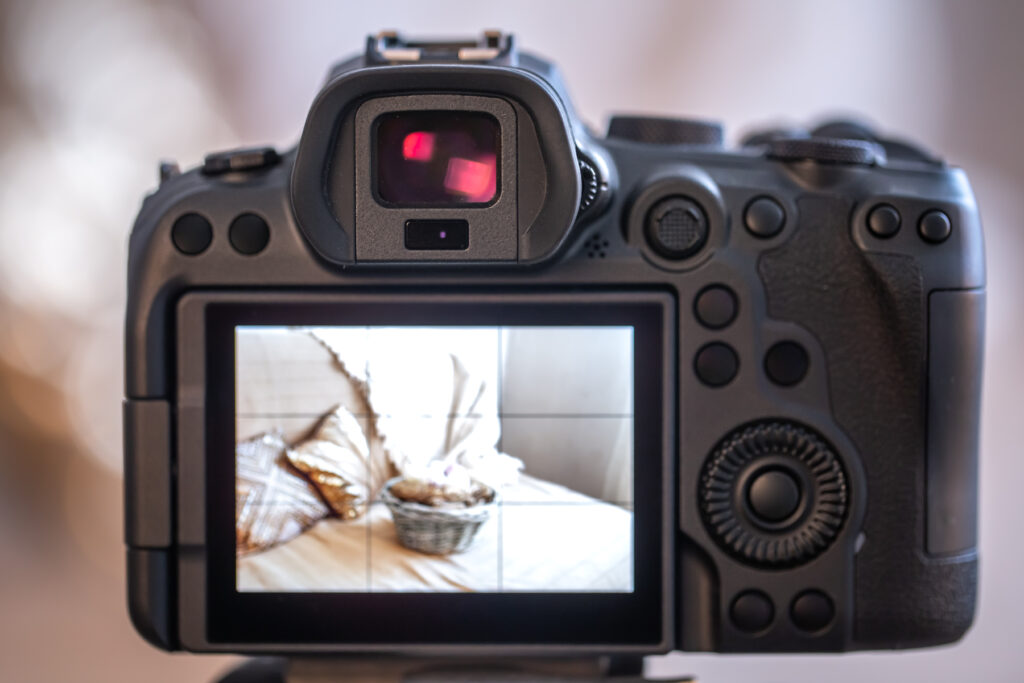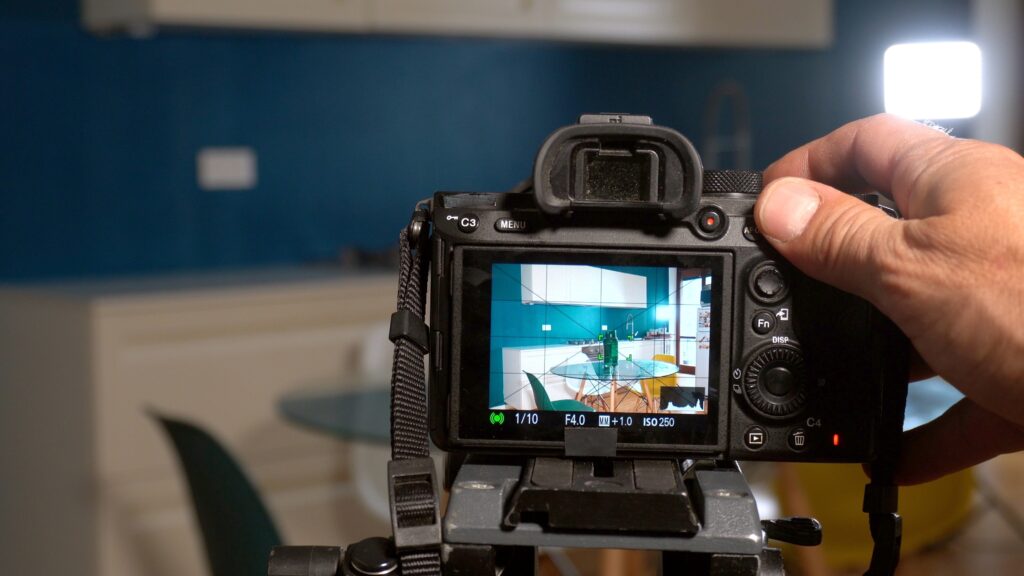7 Common Real Estate Photography Mishaps You Should Never Make
Are you a real estate photographer? If so, it’s essential to know the common photography mishaps to avoid.
Taking real estate photos is a great way to show potential buyers the best features of a property, but if mistakes are made, it can drastically reduce the property’s appeal.
In this blog post, we’ll discuss 7 common real estate photography mishaps that you should never make. Read on to learn how to make sure your photos will help you sell the property quickly and easily.
1) Blurred or Out of Focus Photos

Blurry or out-of-focus photos are one of the most common and detrimental mistakes real estate photographers make.
When potential buyers view a listing online or in a brochure, the first thing they notice is the quality of the images. Blurry photos can immediately turn them off and make them question the professionalism and attention to detail of the photographer, and by extension, the property itself.
There are several reasons why photos can turn out blurry or out of focus. One of the main culprits is shaky hands. Holding a camera steady can be challenging, especially in low-light situations or when using a telephoto lens. Investing in a tripod or other stabilizing equipment is essential to minimize camera shake and ensure crisp, sharp images.
Another factor that can cause blurriness is improper autofocus. Most modern cameras have autofocus systems, but they are not foolproof. It’s crucial to understand how your camera’s autofocus works and use it correctly. Taking the time to focus on the main subject and using the appropriate focus mode can make a world of difference in the sharpness of your images.
Lastly, using the wrong camera settings can also result in blurry photos. For example, using a slow shutter speed without a tripod can lead to motion blur. It’s essential to select the right settings for each situation, including adjusting your ISO, aperture, and shutter speed, to achieve optimal sharpness.
To avoid blurry or out-of-focus images, pay attention to your camera technique, use a tripod or stabilizing equipment when needed. Understand and use your camera’s autofocus capabilities, and choose the right camera settings for each occasion.
2) Poor Lighting and Exposure
One of the most critical factors in real estate photography is lighting and exposure.
Poor lighting and exposure can make even the most stunning property appear dull and unappealing. When potential buyers view a listing, they want to see bright, well-lit spaces that showcase the property’s features and make it feel inviting.
One common mistake in real estate photography is not properly assessing the lighting conditions before taking the photos. Shooting in low-light situations or with inadequate lighting can result in dark, grainy images that lack clarity and detail. It’s crucial to evaluate the lighting in each room and make any necessary adjustments before snapping the shot. This could involve turning on additional lights, opening curtains or blinds to let in natural light, or using external lighting sources such as flash or strobes.
Exposure is another crucial aspect of real estate photography. Overexposed photos can make a space look washed out and devoid of color, while underexposed photos can make it appear gloomy and cramped. Finding the right balance of exposure is essential to capture the true essence of the property. Utilizing the camera’s exposure compensation settings and bracketing techniques can help achieve optimal exposure in challenging lighting conditions.
To avoid the mishap of poor lighting and exposure, it’s important to carefully assess and adjust the lighting conditions in each room, considering both natural and artificial light sources. Experimenting with different exposure settings and using bracketing techniques can help capture the full range of tones and colors in the space.
3) Messy and Cluttered Spaces

When it comes to real estate photography, one of the biggest mistakes you can make is capturing messy and cluttered spaces.
A cluttered room can distract potential buyers from seeing the true potential of the property and make them question the overall cleanliness and maintenance. To ensure that your real estate photos are appealing and showcase the property in the best light, it’s crucial to declutter and tidy up each space before taking any pictures.
Start by removing any personal items, such as family photos or personal knick-knacks, that may make it difficult for potential buyers to envision themselves living in the space. Clear off countertops and tables, eliminating any unnecessary items that can make the area appear cramped or cluttered. Consider rearranging furniture to create an open and spacious feel, highlighting the functionality and flow of the room.
Additionally, pay attention to small details like loose cables, visible trash bins, and unmade beds. These minor imperfections can be easily overlooked in person but can become glaring distractions in a photograph. Take the time to tidy up and hide any unsightly elements before capturing the space.
By ensuring that each room is clean, organized, and free of clutter, you can create visually appealing real estate photos that showcase the property’s potential. These images will help potential buyers envision themselves living in the space and make a positive impression. Remember, a little decluttering can go a long way in making your real estate photos stand out and attract potential buyers.
4) Incorrect Angles and Cropping
When it comes to real estate photography, capturing the property from the right angles and using proper cropping techniques can make a world of difference.
Unfortunately, this is another common mistake that many photographers make. Incorrect angles and cropping can distort the perception of space, hide important features, or make rooms appear smaller than they actually are.
Angles are crucial when it comes to showcasing a property’s best features. The wrong angle can make a room look uninviting or awkwardly proportioned. To avoid this, it’s important to carefully consider the layout and architecture of the property before taking any photos. Experiment with different angles to find the ones that best capture the space’s flow and functionality. This might mean getting down low to capture a unique perspective or standing back to showcase the room’s proportions.
Cropping is another aspect that should not be overlooked. It can make or break the composition of a photo. Poor cropping can cut off important details, leaving viewers guessing about the rest of the room. On the other hand, too much empty space can make the image feel unbalanced and uninteresting. Finding the right balance between including necessary elements and eliminating distractions is key.
To avoid the mishap of incorrect angles and cropping, take the time to carefully compose each shot. Consider the property’s unique features and architectural elements. Experiment with different angles and perspectives to find the most flattering ones. And when it comes to cropping, remember to strike the right balance between including necessary elements and creating an aesthetically pleasing composition.
5) Unappealing Colors and Tones

When it comes to real estate photography, capturing the true colors and tones of a property is essential.
However, many photographers make the mistake of ending up with unappealing colors and tones in their photos. This can undermine the property’s presentation and make buyers doubt its quality and appeal.
One common mistake is using incorrect white balance settings. White balance is crucial for capturing accurate colors, and if it’s off, it can result in photos with a yellow, blue, or green tint. To avoid this mishap, make sure to adjust your white balance settings according to the lighting conditions of each room. You can either manually set the white balance or use a preset that matches the lighting situation.
Another mistake is oversaturating or desaturating colors during the editing process. While it’s tempting to enhance the colors to make them pop, it’s important to maintain a natural and realistic look. Oversaturated colors can make the property appear artificial and unappealing, while desaturated colors can make it look dull and lifeless. Striking a balance between enhancing the colors and maintaining their authenticity is crucial.
Additionally, improper exposure adjustments can also lead to unappealing colors and tones. If you overexpose or underexpose your photos, it can result in washed-out or dark and muddy colors. To avoid this, pay attention to your exposure settings while shooting and make necessary adjustments during the editing process.
6) Over-editing or Under-editing Photos
When it comes to editing real estate photos, finding the right balance is crucial. Over-editing or under-editing your photos can have a negative impact on the overall presentation and can turn potential buyers away.
One common mistake is over-editing, where photographers may be tempted to enhance the colors, sharpen the image, or apply filters to make the photo stand out. While some editing is necessary to enhance the image, it’s important not to go overboard. Over-editing can make the photo look unnatural and unappealing. It can also misrepresent the property, creating unrealistic expectations for potential buyers.
On the other hand, under-editing can also be problematic. When photos are under-edited, they can appear dull, lack contrast, or have distracting elements that could have easily been removed. Under-editing can make a potential buyer overlook the property’s best features or fail to see its true potential.
To avoid the mishap of over-editing or under-editing, it’s important to strike a balance. Start by making basic adjustments such as cropping, straightening, and adjusting exposure to ensure the photo is properly framed and well-exposed. Then, proceed with caution when it comes to enhancing colors and sharpness. Remember, less is often more when it comes to editing real estate photos.
Taking the time to carefully review your edits and compare them to the original photo can help you avoid overdoing it. It’s also helpful to seek feedback from colleagues or professionals to ensure your edits enhance the photo without making it look artificial.
7) Ignoring Small Details and Touch-ups

When it comes to real estate photography, it’s easy to get caught up in capturing the big picture and forget about the small details.
However, ignoring small details and neglecting touch-ups can have a significant impact on the overall quality of your photos. These little imperfections may not seem like a big deal, but they can distract potential buyers and make them question the overall maintenance and care of the property.
One common mistake is not paying attention to small items that may be out of place or need tidying up. It’s essential to take a few extra moments before taking the shot to remove any visible clutter, such as misplaced objects or personal items. Additionally, be mindful of small details like loose threads, wrinkled bedding, or smudged surfaces. These minor imperfections can be easily overlooked but can become glaring distractions in a photograph.
Another important aspect is ensuring that the space is clean and presentable. Dusty surfaces, dirty windows, or uncleaned mirrors can detract from the overall appeal of the property. Taking the time to wipe down surfaces, sweep floors, and ensure a tidy appearance can make a significant difference.
Lastly, don’t forget about minor touch-ups during the editing process. Removing distractions such as blemishes, stains, or scratches can improve the overall aesthetics of the photo and make it more appealing to potential buyers.
Ready to sell your property? Give us a call today and learn more about our professional photography services that can boost your property listing!
Plus, explore our virtual assistant coaching program to level up your business. Don’t forget to tune into our new podcast for even more valuable insights!
